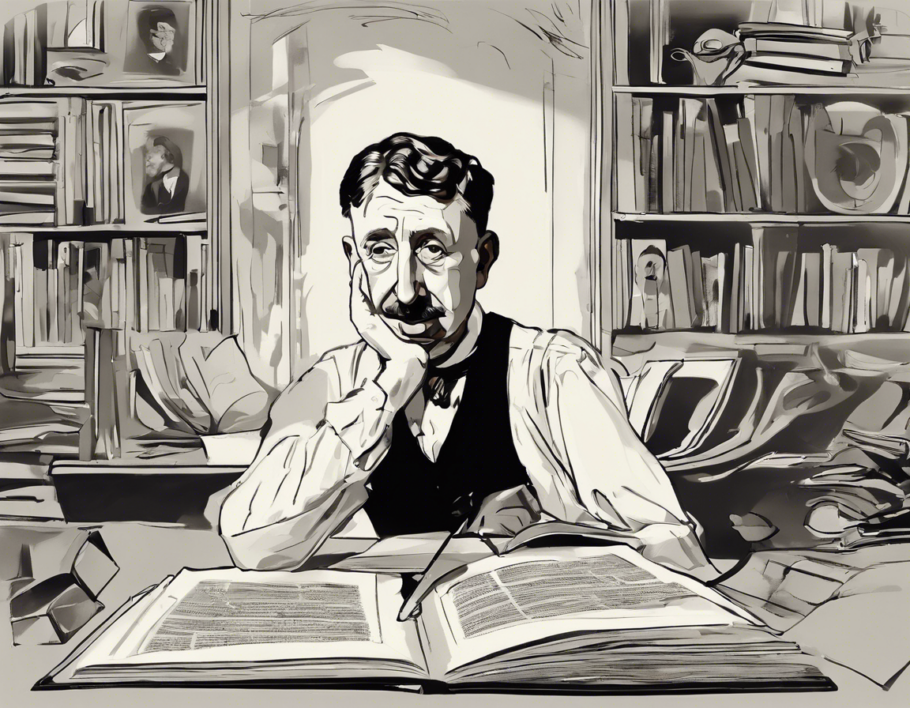Introduction
In the landscape of English literature, two names shine brightly as beacons of unparalleled storytelling and social commentary: E. M. Forster and Jane Austen. While their writing styles and periods differ, their works are lauded for their sharp wit, keen observations, and timeless themes. In this article, we delve into the genius of Jane Austen through the eyes of E. M. Forster, exploring how he viewed her as a master of caricatures and delving into the depths of her characters and plots.
I. Understanding Caricatures in Literature
Caricatures in literature refer to exaggerated or oversimplified portrayals of characters, often highlighting specific traits or flaws for satirical or comic effect. While some may view caricatures as one-dimensional or lacking depth, skilled writers like Austen use them as tools to cleverly critique society and human nature.
II. Forster’s Perspective on Austen
E. M. Forster, known for his own masterpieces like “A Passage to India” and “Howards End,” held Jane Austen in high regard for her ability to create vivid and memorable characters through subtle and sophisticated caricatures. Forster believed that Austen’s characters, though seemingly light-hearted on the surface, actually delved deep into the human psyche, revealing truths about manners, relationships, and societal norms.
III. Analyzing Austen’s Characters
-
Elizabeth Bennet (Pride and Prejudice) – Elizabeth’s sharp wit and independent spirit make her a beloved character, but Austen also uses her to critique the hypocrisies of the upper class.
-
Emma Woodhouse (Emma) – Emma’s well-meaning meddling in others’ lives highlights the consequences of self-deception and misjudgment, showcasing Austen’s skill in crafting flawed yet relatable characters.
-
Mr. Collins (Pride and Prejudice) – Mr. Collins embodies vanity and insincerity, serving as a caricature of the obsequious clergy prevalent in Austen’s time.
IV. Themes in Austen’s Works
-
Social Class – Austen often critiques the rigid social hierarchies of her time, showing the absurdity of pride and prejudice based on wealth and status.
-
Marriage and Love – Despite the romantic allure of her novels, Austen also delves into the practicalities and realities of marriage as a social contract for women in Regency England.
-
Satire and Irony – Austen’s subtle use of satire and irony adds layers of depth to her works, inviting readers to reflect on the follies of human behavior.
V. Forster and Austen’s Legacy
E. M. Forster’s appreciation for Jane Austen extends beyond her literary craft; he recognized her as a keen observer of human nature and society, whose works continue to resonate with readers across generations. While their writing styles may differ, both Forster and Austen share a gift for capturing the nuances of human relationships and societal norms with precision and wit.
Frequently Asked Questions (FAQs)
- What makes Jane Austen’s characters stand out from other literary figures?
-
Jane Austen’s characters stand out for their complexity despite being caricatures, showcasing a depth of emotions and motivations that resonate with readers.
-
How does E. M. Forster’s perspective add to our understanding of Jane Austen’s works?
-
E. M. Forster’s analysis of Austen’s use of caricatures sheds light on the sophistication of her storytelling and her keen eye for societal nuances.
-
Are Jane Austen’s themes still relevant in today’s society?
-
Yes, Austen’s themes of social class, love, and satire continue to be relevant as they reflect timeless aspects of human nature and relationships.
-
Why is Jane Austen often considered a pioneer of the comedy of manners genre?
-
Austen’s sharp observational skills and wit in critiquing the social mores of her time earned her the reputation as a pioneer of the comedy of manners genre.
-
What sets E. M. Forster apart as a writer compared to Jane Austen?
- While both Forster and Austen excel in characterization and social commentary, Forster’s works often delve into deeper philosophical and existential themes, reflecting the changing times in which he lived.
In conclusion, the genius of Jane Austen as seen through the eyes of E. M. Forster reveals a rich tapestry of character-driven narratives, satirical wit, and timeless themes that continue to captivate readers and scholars alike. By exploring Austen’s mastery of caricatures and the depths of her characters, we gain a deeper appreciation for her literary legacy and her enduring relevance in the world of literature.

